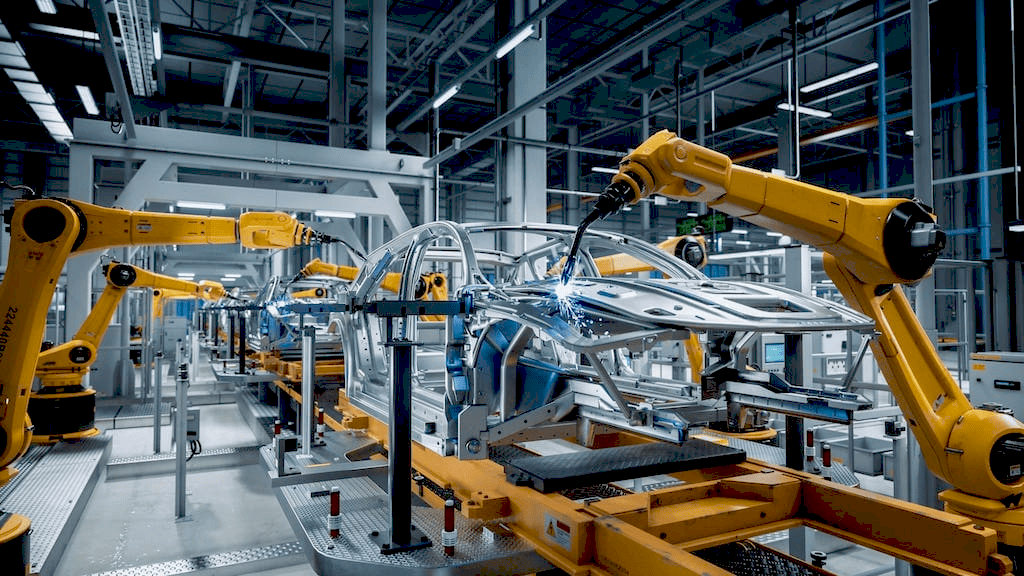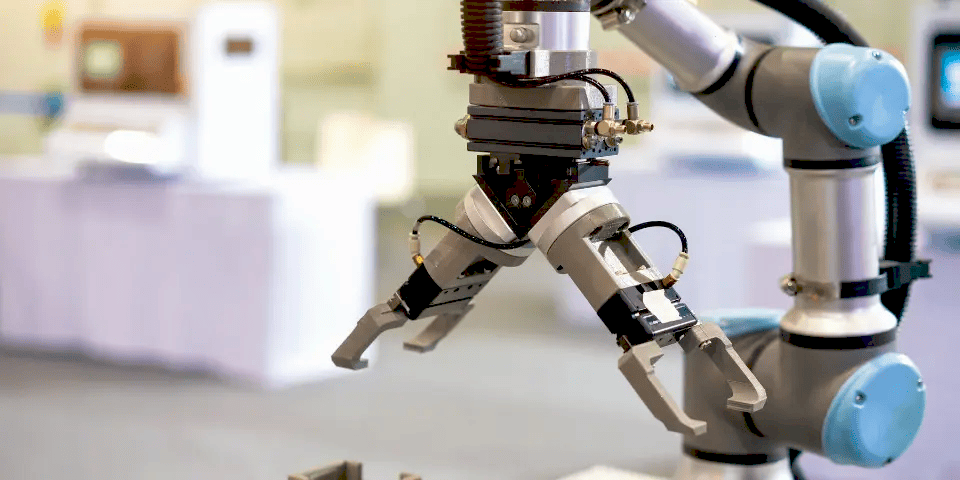Introduction and Overview
industrial robot automation plays a critical role in optimizing manufacturing processes by introducing precision, efficiency, and consistency in production environments. With its ability to automate complex tasks, industrial robot automation has evolved over time, transitioning from basic mechanized systems to sophisticated, intelligent solutions. Cost-effective industrial robot automation has become a central component in modern manufacturing, facilitating automated production line integration that minimizes human error and increases throughput.
The historical evolution of industrial robot automation is marked by significant milestones. Initially, factories relied on manual labor and simple mechanical aids. Gradually, technological advancements paved the way for automated solutions, which led to enhancements in manufacturing robotics efficiency improvements. Pioneering systems laid the groundwork for advanced industrial robot solutions that now incorporate sensor integration, real-time control systems, and machine learning algorithms to adapt to varying production demands.
Key benefits of robotic automation in manufacturing include reduced operational costs, improved quality control, and increased safety. These benefits are backed by numerous successful case studies and data-driven research. The integration of advanced robotics in manufacturing has enabled:
- Enhanced precision in repetitive tasks
- Rapid adaptation to production changes
- Improved overall equipment effectiveness
Manufacturers adopting these technologies have experienced a direct impact on productivity, evidenced by a 20-30% improvement in operational efficiencies as noted by Robotics Industries Association and supported by findings on Manufacturing.net.
Furthermore, the journey from rudimentary automation setups to modern systems underscores the transformative impact of integrating robotics in production environments. The following steps outline the evolution:
- Initial mechanization with limited automation.
- Adoption of programmable logic controllers for improved task efficiency.
- Integration of advanced sensor and machine learning technology.
The continuous innovation in industrial robot automation not only delivers immediate benefits but also establishes a sustainable future for manufacturing. By embracing these advancements, the sector ensures a robust and adaptive production ecosystem geared towards long-term success.
Technologies and Implementation Strategies
industrial robot automation integrates advanced sensor integration, control systems, and machine learning methods to drive precision and adaptability in production environments. The use of high-accuracy sensors, such as vision systems and tactile devices, ensures real-time monitoring and correction for cost-effective industrial robot automation. These technologies support automated production line integration, which is crucial for maintaining consistent quality and achieving manufacturing robotics efficiency improvements.
Modern control systems, including programmable logic controllers and distributed control networks, enable seamless coordination among robotic units. Advanced industrial robot solutions are designed to communicate with existing infrastructure through standardized protocols. Machine learning algorithms further enhance this capability by predicting maintenance needs and optimizing operational parameters. This results in measurable robotic automation benefits in manufacturing, such as reduced downtime and improved product consistency.
Implementing these systems requires a detailed strategy to ensure smooth human-robot collaboration and minimal disruption to current workflows. The integration process typically involves several key steps:
- Assessment and Planning: Evaluate the current manufacturing setup and identify opportunities for sensor augmentation and control system upgrades. A comprehensive audit of existing processes allows for the selection of the most suitable robotic solutions.
- System Integration: Implement sensor networks and embed control systems within designated production segments. Data from these sensors is fed into machine learning modules to optimize performance and reliability.
- Testing and Calibration: Conduct rigorous testing to calibrate sensor accuracy and validate control system responses. This phase also includes safety checks to ensure that human-robot collaboration meets all industrial standards.
- Training and Optimization: Provide detailed training for operators and maintenance staff, focusing on the new integration protocols. Continuous performance tracking enables iterative improvements and ensures long-term efficiency.
Key benefits include improved synchrony between automated systems and enhanced real-time decision-making capabilities. For example, a recent case study by the Robotics Industries Association demonstrated significant improvements in manufacturing robotics efficiency improvements after deploying a multi-tier sensor network. Furthermore, automated control systems have been observed to reduce error margins and drive down operational costs.
In summary, effective implementation of industrial robot automation hinges on the coordinated use of sensor integration, sophisticated control systems, and machine learning methods. These integrated strategies not only facilitate cost-effective industrial robot automation but also ensure enhanced operational performance, safety, and scalability for future manufacturing requirements.
Challenges and Future Perspectives
industrial robot automation faces significant challenges in the current manufacturing landscape due to maintenance requirements, stringent safety protocols, and the need for workforce adaptation. The adoption of these advanced systems demands that manufacturers address several technical and operational issues before full-scale integration can be achieved. Maintenance challenges arise from the complexity of robotic systems that require periodic calibration and upkeep to prevent unexpected breakdowns. Rigorous safety protocols must be established to protect both human operators and machinery, particularly in environments where man-robot collaboration is routine. Furthermore, workforce adaptation is essential as employees need to be retrained to work seamlessly alongside robotic units, ensuring that operational workflows remain uninterrupted.
To tackle these challenges, manufacturers are implementing multi-faceted strategies. For example, regular maintenance schedules and real-time monitoring systems are being introduced to minimize downtime and enhance overall equipment effectiveness. Safety measures are reinforced through comprehensive training programs and the integration of sensors that detect potential hazards. Simultaneously, companies invest in training initiatives to help workers gain the necessary skills to manage and collaborate with advanced robotic systems. Such measures are essential to ensure a fluid transition from traditional manual operations to automated production lines.
Several key challenges can be summarized as follows:
- Maintenance Complexity: Robotic systems require constant monitoring, scheduled maintenance, and predictive analytics to mitigate unexpected failures.
- Safety Protocols: Establishing and adhering to strict safety guidelines is essential to prevent accidents in facilities where human and robot interactions are common.
- Workforce Adaptation: The workforce must undergo regular training to stay updated with new technologies and work safely alongside robots.
The future perspectives for industrial robot automation are promising and driven by continual technological breakthroughs. Emerging trends include the integration of more robust machine learning algorithms, which will further optimize robotic performance by predicting maintenance needs and adjusting operational parameters in real time. Advanced sensor technologies are expected to play a crucial role in enhancing the accuracy of automated systems, leading to even more precise quality control in production lines.
Future developments are also likely to see the rise of decentralized control systems that promote more flexibility and scalability in manufacturing processes. Manufacturers are now exploring the use of cloud-based platforms to enable collaborative robotics, which not only increases operational efficiency but also allows data sharing between multiple production sites. This trend aligns with industry research that suggests a promising upswing in long-term benefits, including significant cost reductions and increased manufacturing throughput. A case study by the Robotics Industries Association highlights how proactive maintenance using intelligent sensors has decreased downtime by up to 25%, while a report on Manufacturing.net reinforces the potential for productivity enhancements through strategic automation.
The long-term benefits of robotic automation in manufacturing include enhanced product consistency, greater overall equipment effectiveness, and improved safety outcomes. Manufacturers adopting these strategies not only experience immediate cost savings but also lay the groundwork for future advancements. In summary, overcoming the challenges of maintenance complexity, safety protocol implementation, and workforce adaptation will be vital for realizing the full potential of industrial robot automation. Manufacturers should consider:
- Investing in predictive maintenance technologies to reduce unexpected equipment failures.
- Upgrading safety measures with the latest sensor technologies and operator training programs.
- Integrating cloud-based control systems for improved scalability and data sharing.
This coordinated approach ensures that, despite current challenges, the manufacturing sector is well-positioned to reap the long-term benefits and technological breakthroughs essential for sustainable growth in robotic automation.




